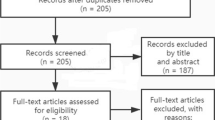Abstract
Purpose
The aim of this study was to assess patients with Parkinson’s disease (PD) in comparison with patients without PD for the treatment of hip fractures. Therefore, we performed a mono-centre study including 145 patients with PD and 2135 consecutive patients without PD as a concurrent group (C).
Methods
For analysis, we used our database, in which any type of hip fracture was enrolled. The study period ranged from 2007 to 2017, and the patient age was ≥ 60 years. Overall, 10 variables were included. The primary measures were operations for any reason, infection, dislocation, failure, and mortality. The secondary outcome was any de novo fracture based on a new fall. The follow-up period for every living patient was 2 years after the operation. Any missing data were retrospectively evaluated via telephone. The hypothesis was no effect between the two groups.
Results
No significant differences were observed regarding revision (p = 0.348), infection (p = 0.207), dislocation (p = 0.785), failure of internal fixation (p = 0.368), failure of replacement (p = 0.174), and de novo fractures (p = 0.287). However, patients with PD sustained a contralateral hip fracture significantly more often (p < 0.001). Kaplan–Meier survival analysis demonstrated no effects up to 2 years after the operation (log rank 0.259).
Conclusion
Compared to a concurrent group, patients with PD demonstrated no more complications and similar mortality rates within 2 years after surgery. The rate of dislocation after hip replacement was also not increased. A contralateral hip fracture was the most common de novo fracture in PD. Further studies should investigate measures reducing the risk for any new falls in PD.

Similar content being viewed by others
References
Bloem BR, Grimbergen YA, Cramer M, Willemsen M, Zwinderman AH (2001) Prospective assessment of falls in Parkinson’s disease. J Neurol 248:950–958
Benzinger P, Rapp K, Maetzler W, König HH, Jaensch A, Klenk J, Büchele G (2014) Risk for femoral fractures in Parkinson’s disease patients with and without severe functional impairment. PLoS ONE 9:97073
Critchley RJ, Khan SK, Yarnall AJ, Parker MJ, Deehan DJ (2015) Occurrence, management and outcomes of hip fractures in patients with Parkinson’s disease. Br Med Bull 115:135–142
Kardadsheh MS, Rodriguez EK, Harris MB, Zurakowski D, Lucas R, Weaver MJ (2015) Mortality and revisions surgery are increased in patients with Parkinson’s disease and fractures of the femoral neck. Clin Orthop Relat Res 473:3272–3279
Coomber R, Alshameeri Z, Masia AF, Mela F, Parker MJ (2017) Hip fractures and Parkinson’s disease: a case series. Injury 48:2730–2735
Marsh JL, Slongo TF, Agel J, Broderick JS, Creevey W, DeCoster TA, Prokuski L, Sirkin MS, Ziran B, Henley B, Audige L (2007) Fracture and dislocation classification compendium-2007: Orthopaedic Trauma Association classification, database and outcomes committee. J Orthop Trauma 21(10 Suppl):1–133
Hoehn MM, Yahr MD (1967) Parkinsonism: onset, progression and mortality. Neurology 17:427–442
Parvizi J, Zmistowski B, Berbari EF, Bauer TW, Springer BD, Della Valle CJ, Garvin KL, Wongworawat MD, Zalavras CG (2011) New definition for periprosthetic joint infection: from the Workgroup of the Musculoskeletal Infection Society. Clin Orthop Relat Res 469:2992–2994
Kaplan EL, Meier P (1958) Nonparametric estimation from incomplete observations. J Am Stat Assoc 53:457–481
American Society of Anesthesiologists (1963) New classification of physical status. Anesthesiology 24:111–114
Hsiue PP, Chen CJ, Villalpando C, Sanaiha Y, Khosbin A, Al S (1699e) Effect of Parkinson’s disease on hemiarthroplasty outcomes after femoral neck fractures. J Arthroplasty 34:1695–1699e1
Ryg J, Rejnmark L, Overgaard S, Brixen K, Vestergaard P (2009) Hip fracture patients at risk of second hip fracture: a nationwide population-based cohort study of 169,145 cases during 1977–2001. J Bone Miner Res 24:1299–12307
Galler M, Zellner M, Roll C, Bäuml C, Füchtmeier B, Müller F (2018) A prospective study with ten years follow-up of two-hundred patients with proximal femoral fracture. Injury 49:841–845
Yuasa T, Maezawa K, Nozawa M, Kaneko K (2013) Surgical outcome for hip fractures with and without Parkinson’s disease. J Orthop Surg (Hong Kong) 21:151–153
Coughlin L, Templeton J (1980) Hip fractures in patients with Parkinson’s disease. Clin Orthop Relat Res 148:192–195
Turcotte R, Godin C, Duchesne R, Jodin A (1990) Hip fractures and Parkinson’s disease. A clinical review of 94 fractures treated surgically. Clin Orthop Relat Res 256:132–136
Hu F, Jiang C, Shen J, Tang P, Wang Y (2012) Preoperative predictors for mortality following hip fracture surgery: a systemic review and meta-analysis. Injury 43:676–685
Maxwell MJ, Moran CG, Moppett IK (2008) Development and validation of a preoperative scoring system to predict 30 day mortality in patients undergoing hip fracture surgery. Br J Anaesth 101:511–517
Müller F, Galler M, Kottmann T, Zellner M, Bäuml C, Füchtmeier B (2018) Analysis of 2000 surgically treated proximal femoral fractures: multiple variables influence mortality. Unfallchirurg 121:550–559
Masonis JL, Bourne RB (2002) Surgical approach, abductor function, and total hip arthroplasty dislocation. Clin Orthop Relat Res 405:46–53
Roche JJ, Wenn RT, Sahota O, Moran CG (2005) Effect of comorbidities and postoperative complications on mortality after hip fracture in elderly people: prospective observational cohort study. BMJ 331:1374
Penrod JD, Litke A, Hawkes WG, Magaziner J, Doucette JT, Koval KJ, Silberzweig SB, Egol KA, Al S (2008) The association of race, gender, and comorbidity with mortality and function after hip fracture. J Gerontol A Biol Sci Med Sci 63:867–872
Diem-Zangerl A, Seppi K, Wenning GK, Trinka E, Ransmayr G, Oberaigner W, Poewe W (2009) Mortality in Parkinson’s disease: a 20-year follow-up study. Mov Disord 24:819–825
Author information
Authors and Affiliations
Corresponding author
Ethics declarations
Conflict of interest
The authors declare that they have no conflict of interest.
Additional information
Publisher's Note
Springer Nature remains neutral with regard to jurisdictional claims in published maps and institutional affiliations.
Rights and permissions
About this article
Cite this article
Müller, F., Doblinger, M. & Füchtmeier, B. Parkinson’s disease and hip fractures: Are complications and mortality rates increased?. Eur J Orthop Surg Traumatol 30, 1083–1088 (2020). https://doi.org/10.1007/s00590-020-02674-7
Received:
Accepted:
Published:
Issue Date:
DOI: https://doi.org/10.1007/s00590-020-02674-7




